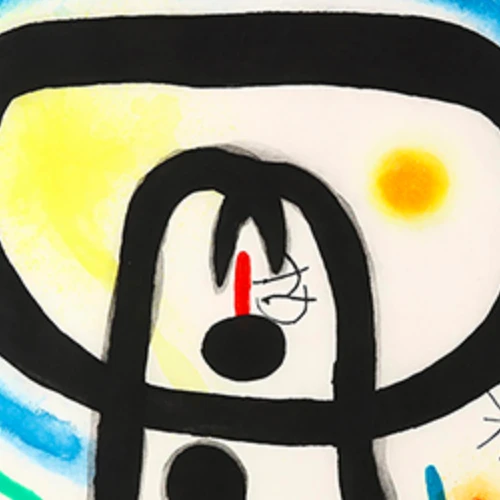To most art lovers, a painting by Joan Miró is immediately recognizable. It displays botanical, geometric, abstract lines or shapes floating against celestial blue, sandy yellow or earth brown backgrounds. It also probably exudes a mystical, childlike yet reassuring dreamy quality, which is in fascinating juxtaposition to his personality.
A highly disciplined, hard working man, Miró spoke little and looked like the perfect bourgeois. Orderly, reliable and punctilious, he was astonishingly versatile, willing to try almost anything. Nothing of him had any touch of the free spirited bohemian that he exhibited in his works and perhaps this is why he had a restless temperament which showed through in his constantly changing art.
Surrealism, Miró discovered, had limitations. He was ready for a radical change in art, but realized that he would have to create it himself. With the famous words, “I want to assassinate painting,” Miró did just that by taking the elements out of his art and stuck to the essentials. Whether he used a limited color palate, sparse geometric designs, or different material, he deified the essence of painting being on a canvas.

''I personally don't know where we are heading,'' Miró told a Spanish journalist in 1931. ''The only thing that's clear to me is that I intend to destroy, destroy everything that exists in painting. I have utter contempt for painting. The only thing that interests me is the spirit itself, and I only use the customary artists' tools -- brushes, canvas and paint -- in order to get the best effects. I'm only interested in anonymous art, the kind that springs from the collective unconscious.''
An interesting contrast to his disciplined lifestyle, but by the end of his long life, Miró had succeded in doing just that. He executed paintings and sculptures that prefigured Abstract Expressionism, Pop Art, Color Field painting, process art, appropriation, and even conceptualism. He “assassinated painting”, and left us with art that is rich is context, color, and playfulness.
Enjoy our collection of Miró lithographs for sale.

